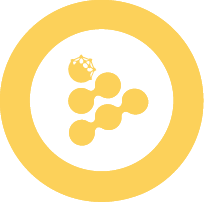🧑🏭 Build your iApp
🧰 Initialize your iApp
The iApp (iExec Application) Generator CLI simplifies the setup of your iApp by guiding you through a step-by-step initialization process. This ensures your iApp is correctly configured and compatible with iExec's confidential computing environment.
🏗 Define your Project
_ _
(_) / \ _ __ _ __
| | / _ \ | '_ \| '_ \
| |/ ___ \| |_) | |_) |
|_/_/ \_\ .__/| .__/
|_| |_| Follow the prompts to specify:
- Project name – Creates a folder for your project files.
- Language – Choose between JavaScript, Python, etc.
- Project mode – Choose Basic (Hello-World setup) or Advanced mode.
⚙ Configure
You'll set up:
- Arguments (Args) – Public parameters for your iApp.
- Input Files – Files dynamically downloaded during execution. These can come from a specific URL.
- Requester Secrets – Confidential authentication strings.
- Protected Data – Encrypted data accessible only inside the TEE.
- App Secret – Immutable secret provisioned by the iApp owner.
For more details and to learn how to use them in your application, refer here Inputs and Outputs
🚀 Build your iApp
After initialization, the following essential files and directories are generated:
iapp.config.jsonsrc/app.js(JavaScript) orsrc/app.py(Python)Dockerfile- Directories:
input/output/cache/
To modify your main application logic open:
src/app.js # For JavaScript
src/app.py # For PythonINFO
💡 The src/ directory contains the core logic of your iApp. Implement your algorithms and data processing here.
🛠️ CLI Commands Reference
iapp init
Purpose: Initialize a new iApp project
Usage: iapp init [options]
What it does: Creates project structure, configuration files, and basic templates through interactive prompts.
iapp test
Purpose: Test your iApp locally before deployment
Usage: iapp test [options]
Options:
-v, --version[boolean] – Show version number--args <string>– Arguments accessible inside the iApp (use quotes to group)--protectedData <string>– Specify the protected data mock name (default or custom viaiapp mock)--inputFile <string>– One or multiple input files (public URLs) available inside the iApp at$IEXEC_INPUT_FILE_NAME_*--requesterSecret <array>– Key-value requester secrets (index=value) available inside the iApp at$IEXEC_REQUESTER_SECRET_*
iapp deploy
Purpose: Deploy your iApp to the iExec network
Usage: iapp deploy [options]
Options:
--chain <string>– Specify the blockchain network for deployment (e.g.,goerli,mainnet)
iapp run <iAppAddress>
Purpose: Execute your deployed iApp on a worker node
Usage: iapp run <iAppAddress> [options]
Positional arguments:
<iAppAddress>– Address of the deployed iApp to run
Options:
--args <string>– Arguments accessible inside the iApp (use quotes to group)--protectedData <string>– Specify the protected data mock name (default or custom viaiapp mock)--inputFile <string>– One or multiple input files (public URLs) available inside the iApp at$IEXEC_INPUT_FILE_NAME_*--requesterSecret <array>– Key-value requester secrets (index=value) available inside the iApp at$IEXEC_REQUESTER_SECRET_*--chain <string>– Specify the blockchain network to run the iApp on (e.g.,goerli,mainnet)
iapp debug <taskId>
Purpose: Retrieve detailed execution logs from worker nodes
Usage: iapp debug <taskId> [options]
Positional arguments:
<taskId>– The ID of the task to debug
Options:
--chain <string>– Specify the blockchain network of the task (e.g.,goerli,mainnet)
iapp mock <inputType>
Purpose: Create mocked input for testing purposes
Usage: iapp mock <inputType> [options]
Positional arguments:
<inputType>– Type of input to mock (e.g.,default,custom)
Options:
--args <string>– Arguments to use in the mock data--protectedData <string>– Protected data mock name to use--inputFile <string>– Input files to mock--requesterSecret <array>– Requester secrets to mock
iapp wallet <action>
Purpose: Manage wallet-related operations
Usage: iapp wallet <action> [options]
Positional arguments:
<action>– Wallet action to perform (e.g.,balance,address,sign)
Options:
--chain <string>– Specify the blockchain network (e.g.,goerli,mainnet)--data <string>– Data to sign (forsignaction)
Advanced Options Chain Not Supported
EXPERIMENTAL_TDX_APP=true
Purpose: Enable experimental Intel TDX support
Usage: Set as environment variable before running commands
Example: EXPERIMENTAL_TDX_APP=true iapp test
Available with:
iapp testiapp deployiapp run <app-address>
TDX Chain Not Supported
🧪 While TEE iApp are based on intel SGX technology by default, iApp has an experimental support for intel TDX applications.
TDX mode is enabled by setting the environment variable EXPERIMENTAL_TDX_APP=true.
⚠️ Keep in mind: TDX mode is experimental and can be subject to instabilities or discontinuity.
🚀 Next Steps
Your iApp is now running on iExec!
Once your application is stable and functional, you can learn how to manage access to your iApp
